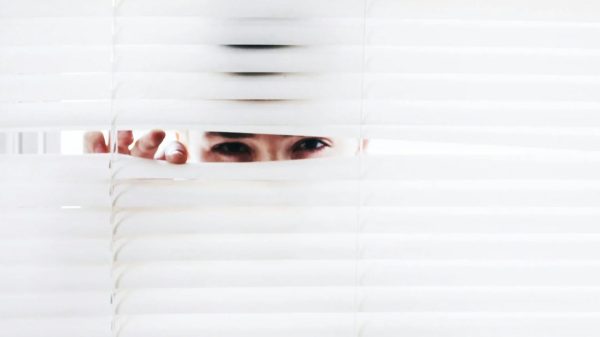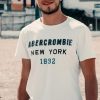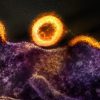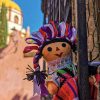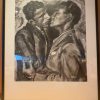On this 65th anniversary of the adoption of the Universal Declaration of Human Rights by the UN General Assembly, there is still a long and torturous road for its full realization especially among lesbian, gay, bisexual and transgender (LGBT) people in Mindanao. Extra-judicial killings and gender-based violence among LGBTs continue to be poorly reported, thereby not addressed particularly in Muslim Mindanao.
One only needs to look at the Islamic city of Marawi in Lanao del Sur, which Outrage Magazine visited to attempt to monitor crimes related against LGBT Filipinos.
Here, gay beauticians have been reportedly gunned down since last year – and at least some of the cases have been documented.

Members of the LGBT community try to find their place in an often hostile environment in Mindanao.
PHOTO COURTESY OF TUMBA LATA
In a police report, Zuhawie Macud, 24, a hair dresser of Beauty and Beyond Salon and Spa was shot by an unidentified suspect armed with a 380 pistol in the evening of June 21, 2012. Initial police investigation revealed that the victim was working inside the salon when the unidentified suspect shot him, hitting the victim’s left cheek. The suspect immediately fled the scene towards an unknown direction. The victim, meanwhile, was immediately brought to Amai Pakpak Medical hospital. In an interview with the mother’s victim, it was disclosed that the suspect of the shooting was identified as a certain Lamualid Pamuan, a relative of the victim and the motive of the suspect was personal grudge. The victim was not willing to file a complaint against the said suspect. The case was, subsequently, closed, settled between the relatives of the alleged criminal and the victim.
Another beautician, Casan Ali Wahab, was reportedly shot on January 13, 2013.
And then there’s Cosary Racman, 44, another beautician, who was shot by an unidentified suspect at Brgy. Banggolo, Marawi City in the evening of March 29, 2013. Recovered in the crime scene was one empty shell of calibre .45, with the victim sustaining two gunshot wounds in the body. He was taken to Amai Pakpak Medical Center for medical treatment. To date, the motive remains undetermined.
There are other cases, though these were not officially reported. Locals of Marawi, nonetheless, remain aware of these cases.
There are those who buy into the widely released reasons for the crimes – that is, that sexual orientation and gender identity and expression (SOGIE) has nothing to do with these crimes.
“May kapatid ako na bakla. Sa Maranao, hindi lang basta-basta pinapatay ang mga bakla dahil bakla sila. Posible na konektado sa paglalako ng droga o prostitusyon ‘yung mga beautician kaya sila binaril (I have a brother who is gay. For Maranaos, gays are not simply killed because they are gay. It may be possible that those beauticians were also connected in drug trade or prostitution),” Hannan Balindong, a Maranao resident of Marawi city, said.
Being LGBT – by itself – makes one a target, nonetheless.
In the middle of 2012, students from the Mindanao State University reported the distribution of leaflets and the radio broadcasts from unidentified sources that allegedly warned gays to leave Marawi. These alleged public warnings against gays were also reported to have occurred in the provincial capital of Sulu island, Jolo.
“Noong 2007, banned ang mga gays and lesbians sa Jolo. Galing ito sa isang local religious group (In 2007, gays and lesbians were banned in Jolo. This came from a local religious group),” said Jul-amin Hadil, a gay Tausug from Jolo.

For many LGBT Filipinos in southern Philippines, life continues to be an ongoing challenge.
PHOTO COURTESY OF IM GLAD COTABATO
Jul-amin recalled that two of his gay friends were killed at that time.
“Una si Jai. May sampung lalake ang pumasok sa kanyang kwarto at sinaksak siya ng maraming beses. Pagkatapos ng pitong araw, si Aya naman ay binaril sa bahay niya ng pitong lalake (Jai was first. Ten men barged in his room and stabbed him multiple times. After seven days, Aya was shot in his house by seven men),” he said.
He also knows of other four cases of gays who were killed in Jolo, even if he could not remember their names.
“Ang mga pagpatay na ito ay itinuturing na ‘Wajib’ o obligasyon ng mga Muslim.” (These killings are considered as ‘Wajib or obligation for Muslims),” Jul-amin said.
During these times, no gays and lesbians were seen at all at their usual hang-out place, the Jolo town plaza.
He added that gay hairdressers also became usual targets for robberies.
Merilyn Jamad, a Tausug lesbian and the president of Tumba Lata, a Jolo-based lesbian organization, reported that in 2010, there was another declaration to ban gays and lesbians, now from local government officials.
“Dadalhin daw ang mga tomboy sa probinsya para mag-training sa military at bibitayin ang mga bakla…yung mga pamilya na walang bakla o tomboy ang mga malakas na sumuporta dito (Lesbians will be brought to the countryside for military training and gays will be hanged. Families who had no gay and lesbian members were very supportive of this),” she said.
Not that law enforcers are helpful.
“May baklang binitay sa Asturias. Walang imbestigasyon ang mga pulis. May mga kaso na nakita ang mga katawan na pugot na ang ulo o nawawala ang ibang parte ng katawan… Hindi ito nakasulat para hindi masira ang imahe ng Jolo (There was one gay guy who was hanged in Asturias. There was no investigation done by the police. There were other cases wherein bodies were found beheaded or missing body parts. These were not documented so as not to not tarnish the image of Jolo),” she added.
LGBT people are also allegedly specifically sought out to be discriminated.
“Sa probinsya, may mga sundalo na naghahanap ng mga bakla sa mga checkpoints. Pinapaiwan nila sila para mag-training sa kanila. Kung hindi, papatayin din sila doon mismo (In the countryside, there were soldiers who would search gay individuals in checkpoints. Gays are asked to stay behind to do military training; if they don’t agree with the training, they will be killed right there and then),” Merilyn said.
And then there was a case wherein the parents surrendered their gay son for training to make him heterosexual.
Similarly noted were “corrective rapes” among lesbians in Jolo.
“May isang tomboy na pina-rape ng kanyang tatay. Kasal na siya ngayon at may anim na anak pero lumlayo na siya sa amin. ‘Yung isa, tinangkaang ipa-rape. Dahil dito, nagbigti siya. Maraming mga lesbian ang lumayas sa kanilang mga pamilya at nakitira na lang sa mga kaibigan (There was a lesbian whose rape was arranged by her father. She is now married and has six children, and she has isolated herself from her lesbian friends. Another lesbian was almost raped; this led to her committing suicide. Many lesbians have fled from their homes and now live with their friends),” Merilyn said.
In Zamboanga City, a transgender also reported getting raped.
Eugene Pendergat was 18 years old when she was gang raped. “Galing ako sa trabaho at ala-una na ng umaga. May sasakyan na tumigil at may mga lalaking nakahubad sa loob at mukhang nakadroga. Pinilit nila ako sa sasakyan, tinalian at binlinfold, at dinala sa tingin ko ay motel (I came from work and it was already 1:00 AM. A car stopped and there were naked guys inside who looked like they were on drugs. They forced me in the car, tied and blindfolded me, and brought me to what I think is a motel),” Eugene recalled. “Nagmakaawa ako na huwag nila akong patayin dahil ako bumubuhay sa pamilya ko. Mga 4:00 AM na nung iniwan nila ako sa tabi ng daan. Duguan, nakahanap ako ng tricycle at pumunta sa pinakamalapit na police station (I begged them not to kill me because I am the breadwinner of my family. It was 4:00 AM when they just dropped me at the roadside. Bleeding, I found a tricycle and went to the nearest police station).”
Although she reported the incident, she was only ridiculed by the policemen on duty. She remembered being told: “Di mo ba na-enjoy? Blessing ‘yan sa iyo! Ikaw pa nga siguro ang nagbigay ng motibo! (Did you not enjoy it? That is a blessing for you! You may be the one who made the first move!)”
When she got home, she did not tell her family and just said she just fell in a ditch. She was traumatized for a while and sought professional help.
Sherhan Espinosa, a gay Muslim from Zamboanga, also reported the same response of police authorities, usual when the victims are gays.
“Mga five or six years ago, may mga kaso na hinahampas ng kadena sa ulo ang mga bakla na naglalakad sa daan ng mga nakamaskarang naka-motor. Target kami dahil sa tingin nila tayo ay mahina. Nanakawan din ako ng tatlong lalake at sa tingin ko ako ang nakita nilang pinakamadaling nakawan (Five or six years ago, there were cases where gays where hit by chains on the head by masked persons in a single motorcycle. We are targeted because they think we are weak. I was robbed by three men and I think they saw me as the easiest target),” Sherhan said.
Sherhan said that police reports have been filed but no action has ever been served.
And so, it is worth highlighting that much remains to be done to advance the human rights of LGBT Filipinos.























